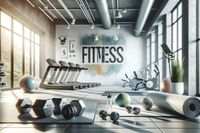The Last Exercise Column You Ever Need to Read
This past year at Slate, we explored exercise. Here’s what we learned.

Go slow.
Everything from your fitness watch to your competitive instinct encourages you to speed up and pass the person who is running/cycling/kayaking in front of you. But pushing yourself to the limit every workout is a recipe for burning out your body, as well as your general enthusiasm for whatever activity you’re doing. Instead, having days where you go very slowly, maybe even embarrassingly slowly, can allow you to recover—as well as just take in the scenery.
You also don’t have to be good at something right off the bat. Maybe it’s even better if you’re not. Failing at a new kind of exercise, and persevering through the frustration of that, is extremely valuable. Getting things “right” isn’t even the point in some cases. “What you’re describing is called yoga-rexia,” Paul Grilley, one of the founders of yin yoga, told Heather Schwedel on her quest to do happy baby correctly. “You think doing the poses is important. What’s important is how it affects your body.”
You don’t need to buy anything!
OK, sure: Whether you’re running or lifting weights, you need the right shoes, the right bra, and basic workout clothes. But, writes Hamilton Nolan, “there are thousands of varieties of heavy, expensive, and utterly superfluous exercise machines that clutter our nation’s basements, rec rooms, and strip-mall L.A. Fitness franchises.” All it’s good for is “the idea that ‘working out’ is something special, an esoteric skill” that you need to fork over thousands of dollars to do properly, versus just … going outside and moving. If you think Nolan is being a little extreme, he is—but also, look at one of the latest trends in exercise equipment, the walking pad, which allows you to … walk.
Experts are often bringing their own baggage into what they tell you.
Eleanor Cummins’ entry on how yoga classes got so expensive helped persuade me to treat myself to a (very, very expensive) five-pack of private sessions with my favorite teacher last spring. Instructors—good ones, at least—are experts, and they are typically paid woefully poorly for the time and energy they bring to a class. There is, I have also learned generally as a health and science editor, nothing like having an expert look at what is going on with your particular body versus you trying to piece together what’s wrong with your form, etc., via the internet.
But it’s important to remember that the person standing at the front of the class is also human. Former personal trainer Sarah Kurchak, who is also the author of the book Work It Out, explained that the way she sees the mistakes made by her colleagues at the gym is influenced by her own relationship to error: “During my own fitness journey—and just in my general existence as a woman in the world—I have internalized criticisms of my body and how it worked. I passed too many of the critiques on to clients,” she writes in an entry titled “What I Regret About My Time as a Fitness Instructor.” “I wish I’d been quieter and more helpful about the occasional hyperextended elbow I saw in classes, for example. My focus on proper exercise sometimes veered too close to perfectionism.”
Your schedule and body will change. Be open to rethinking things.
There are times in life (say, pre-kids?) when you can regularly attend a workout class five times a week. And there are other times when there is a “total wipeout,” writes Hillary Frey, whose exercise of choice was, for a long time, yoga. “I’ll stay off the mat for three to six months, even a year, the whole time feeling shame over my laziness, and then ashamed that I couldn’t practice one of the core tenets of yoga: to be kind to yourself.” She searched for something sustainable, and came up with this: “Just to move. Every day. A little or a lot.”
That was her first entry in Good Fit. Then, she got some advice from a doctor: As a woman approaching 50, she needed to add some strength training to the mix. In her second entry for Good Fit, she chronicled her journey trying out weights and upping her protein intake dramatically. “I have a group chat with three other women who are all around my age, and I refer to it now as the ‘menopause lunch chat,’ ” she writes. Fitness for her now includes talking with her friends about all the chickpeas they’re eating. Things change!



